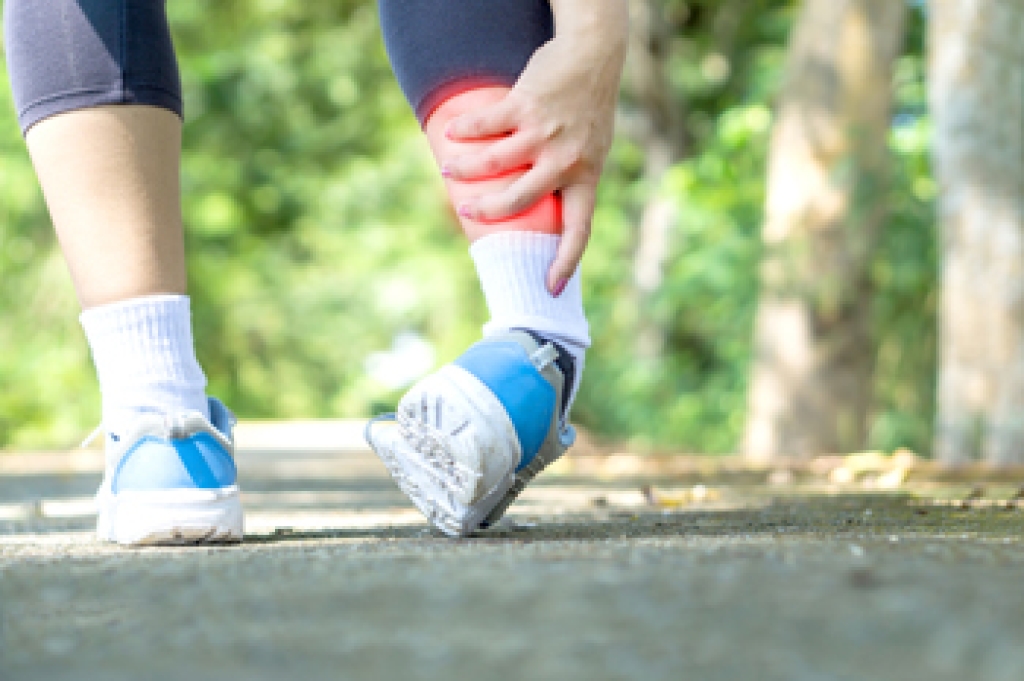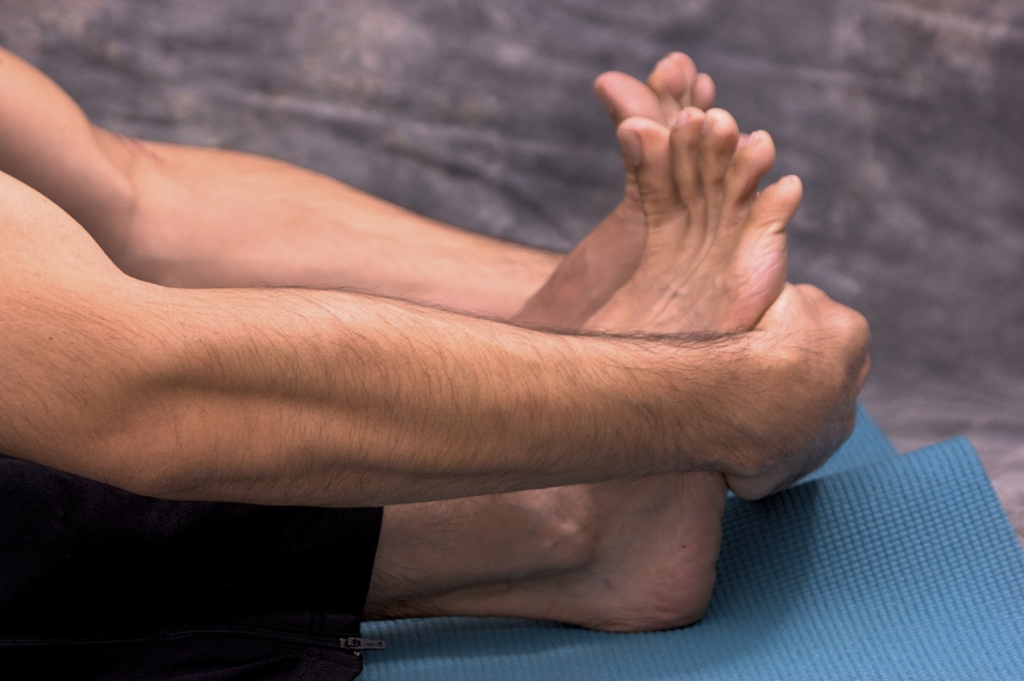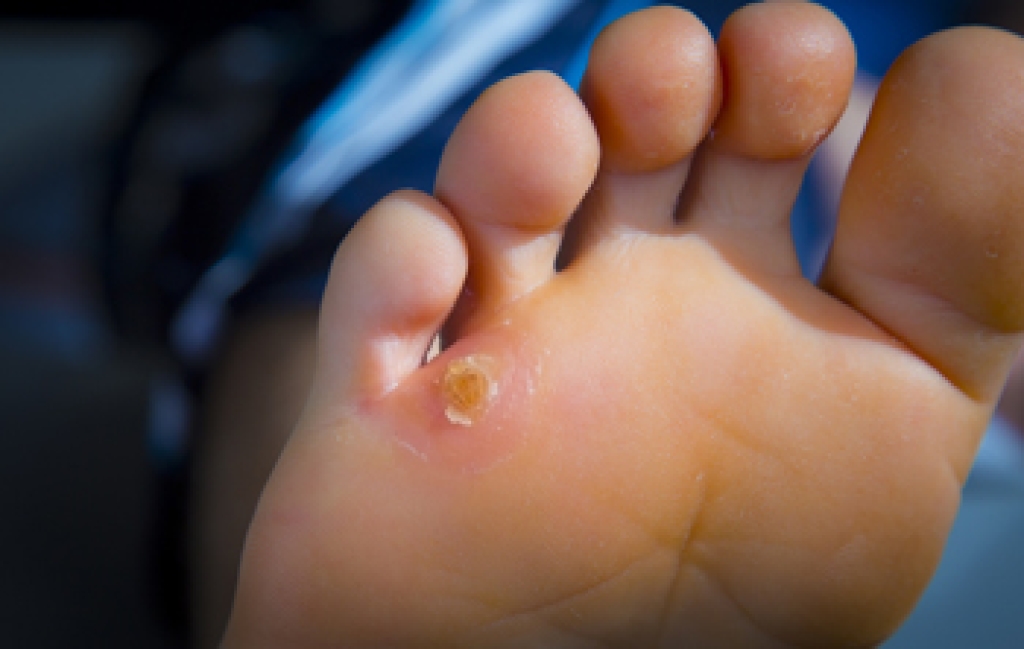
Lansdowne, PA
(610) 626-3338

Lansdowne, PA
(610) 626-3338
 Avid runners may be familiar with the many foot and ankle injuries that can occur while running. Some of these include Achilles tendinitis, plantar fasciitis, and shin splints. Achilles tendinitis can occur when too much stress is placed on the Achilles tendon. This injury can be prevented by strengthening the calf muscles and increasing workout intensity slowly, and pain can be decreased by reducing the stress placed on the tendon. Plantar fasciitis is the inflammation of the tissue that runs along the bottom of the foot, and typically causes heel pain. This can be prevented by stretching and strengthening the feet and making sure that you are wearing the right size and fit of shoe, with proper arch support. If you have plantar fasciitis, taking a break from running and resting the feet is recommended. A shin splint is characterized by pain along the sides of your shin bone. This can be avoided by increasing the intensity and duration of your runs gradually, and can be treated by resting and icing the area. If you are experiencing any foot or ankle pain as a result of running, please seek the care of a podiatrist who can offer the right treatment and prevention options for you.
Avid runners may be familiar with the many foot and ankle injuries that can occur while running. Some of these include Achilles tendinitis, plantar fasciitis, and shin splints. Achilles tendinitis can occur when too much stress is placed on the Achilles tendon. This injury can be prevented by strengthening the calf muscles and increasing workout intensity slowly, and pain can be decreased by reducing the stress placed on the tendon. Plantar fasciitis is the inflammation of the tissue that runs along the bottom of the foot, and typically causes heel pain. This can be prevented by stretching and strengthening the feet and making sure that you are wearing the right size and fit of shoe, with proper arch support. If you have plantar fasciitis, taking a break from running and resting the feet is recommended. A shin splint is characterized by pain along the sides of your shin bone. This can be avoided by increasing the intensity and duration of your runs gradually, and can be treated by resting and icing the area. If you are experiencing any foot or ankle pain as a result of running, please seek the care of a podiatrist who can offer the right treatment and prevention options for you.
Exercising your feet regularly with the proper foot wear is a great way to prevent injuries. If you have any concerns about your feet, contact Dr. George Yarnell of Pennsylvania. Our doctor will treat your foot and ankle needs.
How to Prevent Running Injuries
Many common running injuries are caused by overuse and overtraining. When the back of the kneecap starts wearing out and starts causing pain in your knee, this is commonly referred to as runner’s knee. Runner’s knee is a decrease in strength in your quadriceps and can occur if you’re not wearing properly fitted or supporting shoes. To prevent runner’s knee, focusing on hip strengthening is a good idea, as well as strengthening your quads to keep the kneecaps aligned.
What Are Some Causes of Running Injuries?
- One cause of a common running injury is called iliotibial band syndrome.
- Plantar fasciitis is also another common injury.
- Stress fractures can occur from overtraining, lack of calcium, or even your running style.
Best Ways to Prevent Running Injuries
- Wear footwear that fits properly and suits your running needs.
- Running shoes are the only protective gear that runners have to safeguard them from injury.
- Make a training schedule. Adding strengthening exercises as well as regular stretching can help keep you strong and limber and can lessen the possibility of injuries.
- Stretching keeps muscles limber; this will help you gain better flexibility.
If you have any questions, please feel free to contact our office located in Lansdowne, PA . We offer the newest diagnostic and treatment technologies for all your foot care needs.
 Stretching and exercising your feet is an often overlooked step in health and fitness routines. However, keeping the feet strong and flexible is important, as this can help prevent foot and ankle pain, improve your foot health, and keep you active. Though it may seem like an added burden to have to take time to stretch your feet, it can actually be quick, easy, and fun to incorporate foot exercises into your daily routine. One simple exercise that you can do to strengthen the muscles on the top of your feet and toes is towel scrunches. Set a towel down on the floor, then sit in a chair with your feet directly on top of the towel. Using only your toes, scrunch up the towel, pulling it toward you. Do this five times with each foot. For more information about exercising your feet, please consult with a podiatrist.
Stretching and exercising your feet is an often overlooked step in health and fitness routines. However, keeping the feet strong and flexible is important, as this can help prevent foot and ankle pain, improve your foot health, and keep you active. Though it may seem like an added burden to have to take time to stretch your feet, it can actually be quick, easy, and fun to incorporate foot exercises into your daily routine. One simple exercise that you can do to strengthen the muscles on the top of your feet and toes is towel scrunches. Set a towel down on the floor, then sit in a chair with your feet directly on top of the towel. Using only your toes, scrunch up the towel, pulling it toward you. Do this five times with each foot. For more information about exercising your feet, please consult with a podiatrist.
Stretching the feet is a great way to prevent injuries. If you have any concerns with your feet consult with Dr. George Yarnell from Pennsylvania. Our doctor will assess your condition and provide you with quality foot and ankle treatment.
Stretching the Feet
Stretching the muscles in the foot is an important part in any physical activity. Feet that are tight can lead to less flexibility and make you more prone to injury. One of the most common forms of foot pain, plantar fasciitis, can be stretched out to help ease the pain. Stretching can not only ease pain from plantar fasciitis but also prevent it as well. However, it is important to see a podiatrist first if stretching is right for you. Podiatrists can also recommend other ways to stretch your feet. Once you know whether stretching is right for you, here are some excellent stretches you can do.
It is best to go easy when first stretching your foot and work your way up. If your foot starts hurting, stop exercising and ice and rest the foot. It is advised to then see a podiatrist for help.
If you have any questions please contact our office located in Lansdowne, PA . We offer the newest diagnostic and treatment technologies for all your foot and ankle needs.
 A corn on the foot is a small area of hardened skin that typically develops as a result of excess friction. They can develop from wearing shoes and socks that do not fit correctly. Soft corns can form between the toes and can remain moist as they rub against the neighboring toes. This type of corn can cause severe pain and can alter the gait to compensate for the discomfort. Hard corns can form on the outside of the pinky toe, or on the sole of the foot. These can develop from standing for the majority of the day, in addition to having aging feet. One potential treatment option is wearing the correct shoes in order to eliminate a portion of the friction on the corn. Corns can be quite painful, and it is suggested that you speak to a podiatrist about how to prevent and treat corns on the feet.
A corn on the foot is a small area of hardened skin that typically develops as a result of excess friction. They can develop from wearing shoes and socks that do not fit correctly. Soft corns can form between the toes and can remain moist as they rub against the neighboring toes. This type of corn can cause severe pain and can alter the gait to compensate for the discomfort. Hard corns can form on the outside of the pinky toe, or on the sole of the foot. These can develop from standing for the majority of the day, in addition to having aging feet. One potential treatment option is wearing the correct shoes in order to eliminate a portion of the friction on the corn. Corns can be quite painful, and it is suggested that you speak to a podiatrist about how to prevent and treat corns on the feet.
Corns can make walking very painful and should be treated immediately. If you have questions regarding your feet and ankles, contact Dr. George Yarnell of Pennsylvania. Our doctor will treat your foot and ankle needs.
Corns: What Are They? And How Do You Get Rid of Them?
Corns are thickened areas on the skin that can become painful. They are caused by excessive pressure and friction on the skin. Corns press into the deeper layers of the skin and are usually round in shape.
Ways to Prevent Corns
There are many ways to get rid of painful corns such as:
Treating Corns
Although most corns slowly disappear when the friction or pressure stops, this isn’t always the case. Consult with your podiatrist to determine the best treatment option for your case of corns.
If you have any questions, please feel free to contact our office located in Lansdowne, PA . We offer the newest diagnostic and treatment technologies for all your foot care needs.
 Cuboid syndrome is a condition that is typically caused by dislocation of the cuboid bone which is located in the middle of the foot. Cuboid syndrome results in pain on the outside of your foot, swelling, weakness, and reduced mobility. The pain is often made worse when the affected foot bears weight or is involved in any side to side movements. Cuboid syndrome is often secondary to an ankle sprain. A podiatrist can diagnose cuboid syndrome through a physical examination, but an X-ray may be needed to rule out a fracture. Treatment options may include the doctor performing manipulations on the foot to realign the cuboid bone and resting, icing, compressing, and elevating the affected foot to reduce painful symptoms. For more information about cuboid syndrome, please consult with a podiatrist.
Cuboid syndrome is a condition that is typically caused by dislocation of the cuboid bone which is located in the middle of the foot. Cuboid syndrome results in pain on the outside of your foot, swelling, weakness, and reduced mobility. The pain is often made worse when the affected foot bears weight or is involved in any side to side movements. Cuboid syndrome is often secondary to an ankle sprain. A podiatrist can diagnose cuboid syndrome through a physical examination, but an X-ray may be needed to rule out a fracture. Treatment options may include the doctor performing manipulations on the foot to realign the cuboid bone and resting, icing, compressing, and elevating the affected foot to reduce painful symptoms. For more information about cuboid syndrome, please consult with a podiatrist.
Cuboid syndrome, also known as cuboid subluxation, occurs when the joints and ligaments near the cuboid bone in the foot become torn. If you have cuboid syndrome, consult with Dr. George Yarnell from Pennsylvania. Our doctor will assess your condition and provide you with quality foot and ankle treatment.
Cuboid syndrome is a common cause of lateral foot pain, which is pain on the outside of the foot. The condition may happen suddenly due to an ankle sprain, or it may develop slowly overtime from repetitive tension through the bone and surrounding structures.
Causes
The most common causes of cuboid syndrome include:
Symptoms
A common symptom of cuboid syndrome is pain along the outside of the foot which can be felt in the ankle and toes. This pain may create walking difficulties and may cause those with the condition to walk with a limp.
Diagnosis
Diagnosis of cuboid syndrome is often difficult, and it is often misdiagnosed. X-rays, MRIs and CT scans often fail to properly show the cuboid subluxation. Although there isn’t a specific test used to diagnose cuboid syndrome, your podiatrist will usually check if pain is felt while pressing firmly on the cuboid bone of your foot.
Treatment
Just as the range of causes varies widely, so do treatments. Some more common treatments are ice therapy, rest, exercise, taping, and orthotics.
If you have any questions, please feel free to contact our office located in Lansdowne, PA . We offer the newest diagnostic and treatment technologies for all your foot care needs.